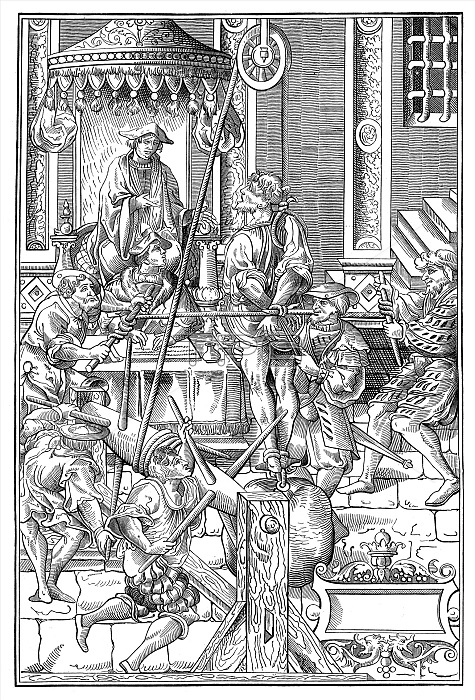
The strappado is a form of torture wherein the victim has his or her arms tied behind their back; a large rope is then tied to the wrists and passed over a pulley, beam, or a hook on the roof. The torturer pulls on this rope until the victim is hanging from the arms. Since the hands are tied behind the victim's back, this will cause a very intense pain and possible dislocation of the arms. The full weight of the subject's body is then supported by the extended and internally rotated shoulder sockets. While the technique shows no external injuries, it can cause long-term nerve, ligament, or tendon damage. The technique typically causes brachial plexus injury, leading to paralysis or loss of sensation in the arms. Weights may be added to the body to intensify the effect and increase the pain. This kind of torture would generally not last more than an hour, without rest, as it would likely result in death. Other names for strappado include; reverse hanging, Palestinian hanging and il tormento della corda. Historically, it was used by the medieval Inquisition and many governments. Woodcut from "The Criminal Procedure" (Praxis Criminus Persequendi), 1541.
| px | px | dpi | = | cm | x | cm | = | MB |
Details
Creative#:
TOP22176654
Source:
達志影像
Authorization Type:
RM
Release Information:
須由TPG 完整授權
Model Release:
N/A
Property Release:
No
Right to Privacy:
No
Same folder images:

 Loading
Loading